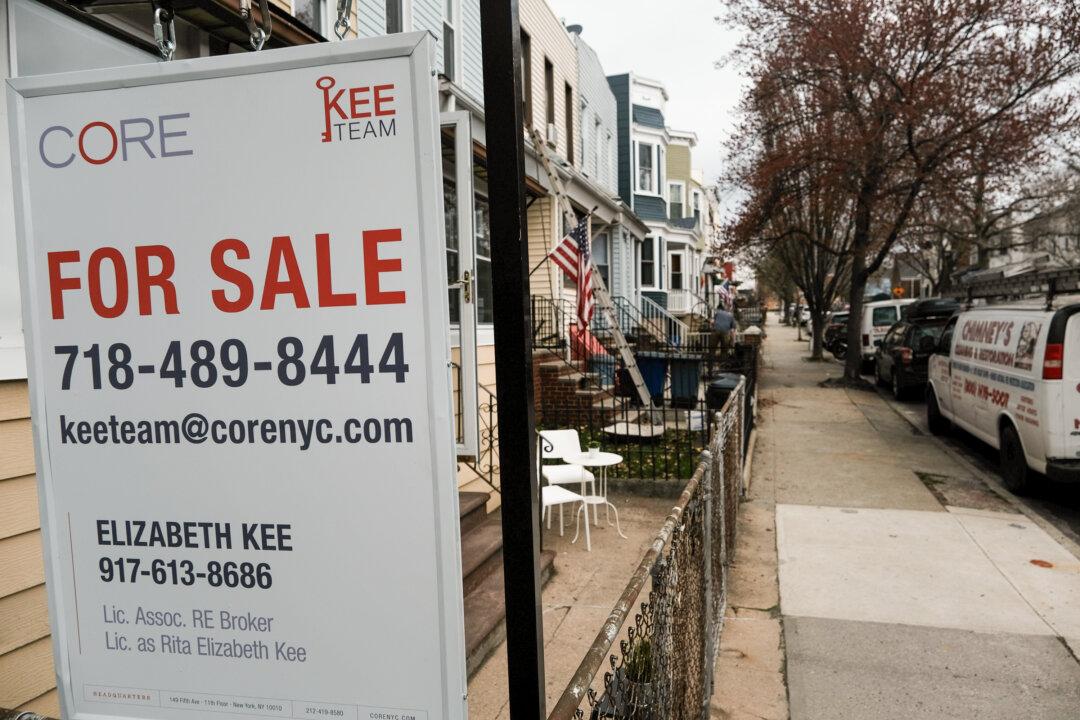Owning a home now takes more than a third of a person’s income, making the housing market “particularly challenging” for prospective buyers, according to real estate data curator ATTOM.
In 99 percent of counties across the United States, the median price of single-family homes and condos remained “less affordable” in the second quarter, according to a July 3 ATTOM press release. The cost of owning such a property consumed 35.1 percent of the average national wage, the highest since 2007. This is also well above the common lending guidelines which stipulate that home ownership costs should account for a maximum of 28 percent of income.
“The latest trend continued a pattern, dating back to early 2022, of home ownership requiring historically large portions of wages around the country amid ongoing high residential mortgage rates and elevated home prices.”
The price of a median-priced home jumped to a “new high” of $360,000 during the spring season while mortgage rates remained at roughly seven percent. As a result, the increase in home ownership costs outpaced wage increases, ATTOM stated.
Rob Barber, CEO of ATTOM, pointed out that the affordability data presents a “clear challenge” for people looking to buy homes.
“It’s common for these trends to intensify during the Spring buying season when buyer demand increases. However, the trends this year are particularly challenging for house hunters, more so than at any point since the housing market boom began in 2012.”
“Persistently stronger home price gains this spring continue in markets where inventory is well below pre-pandemic levels, such as those in the Northeast. Also, markets that are relatively more affordable, such as those in the Midwest, have seen healthy price growth this spring,” she said.
“On the other hand, markets with notable inventory increases, including those in Florida and Texas, continue to see annual deceleration that is pulling prices below numbers recorded last year.”
Lawrence Yun, chief economist with the National Association of Realtors (NAR), said he expects rising inventory to boost home sales and push down home price gains over the coming months.
According to NAR data, total housing inventory at the end of May was up 18.5 percent compared to a year back.
Easing Housing Market
Amid high housing costs, the typical U.S. home is selling for far less than the list price, according to a June 27 press release from real estate brokerage Redfin. This is the first time such a situation has happened since the start of the COVID-19 pandemic in 2020.For the four weeks ending June 23, the typical home sold for exactly its list price from a year back and was only roughly two percent above the list price from two years ago.
“The likelihood of homes selling below asking price is rising because there’s more supply than demand, at least for certain types of homes in certain parts of the country,” the report said.
“New listings are up 8.2 percent year over year nationwide … Most inventory is growing stale; over 60 percent of homes are listed for at least a month without going under contract.”
Further addition of inventory as well as expectations that mortgage rates could remain elevated for the remainder of the year could temper competition among buyers, dampening demand and forcing home prices to come down.
“The number of homes on the market rose 22 percent [in May] compared to last year’s near-record-low level. Inventory is still 34 percent below pre-pandemic levels, but that’s the smallest deficit in more than three years.”







